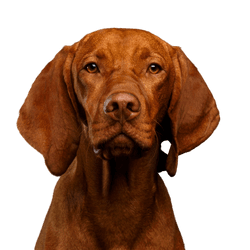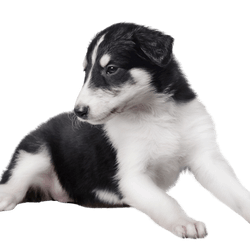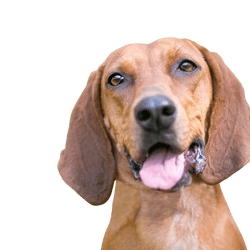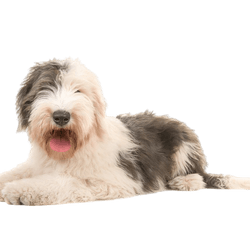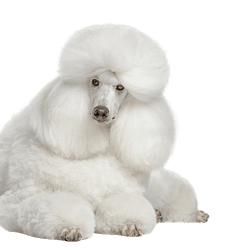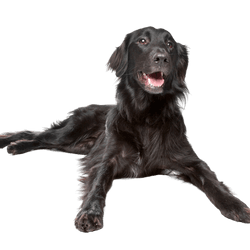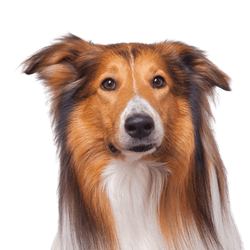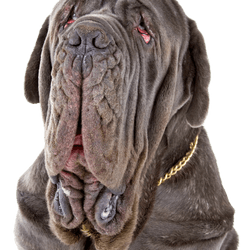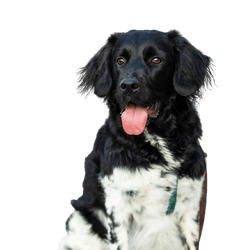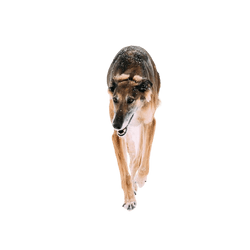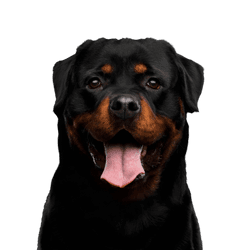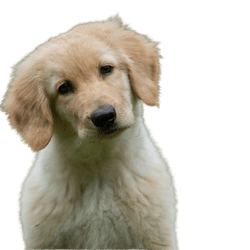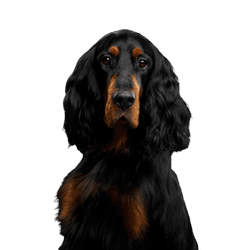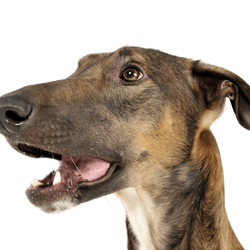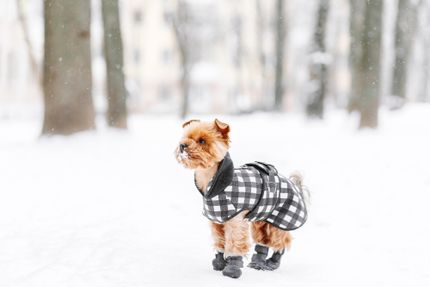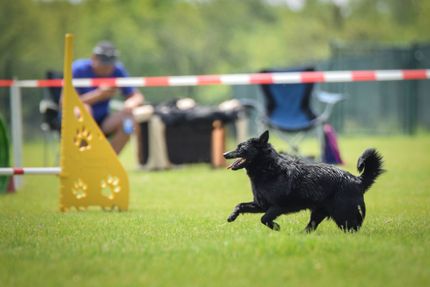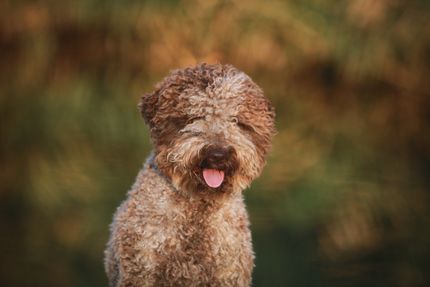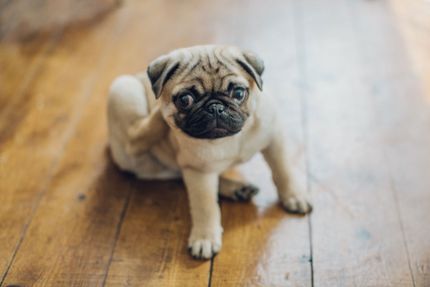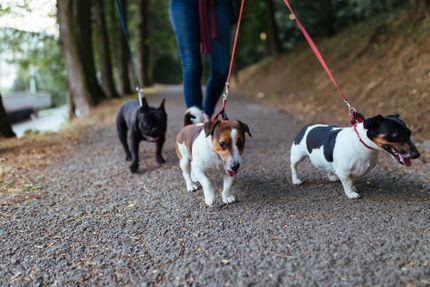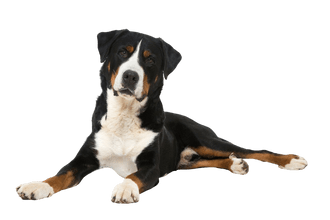
Appenzell Mountain Dog Breed description: Character & Co
Appenzell Mountain Dog
Facts & Origin
What is the origin of the Appenzell Mountain Dog?
As the name suggests, the Appenzell Mountain Dog originates in the Swiss Alps. The exact origin of this breed is not known, but it is said that its ancestors can be found in Roman war dogs. They faithfully accompanied their masters on their marches across the Alps. For many centuries they fulfilled various tasks in the partly impassable terrain high up on the lush meadows: They also kept large herds of animals together and were valuable helpers especially when it came to drvining cows from one place to another. If one of the animals did not move according to their wishes, they would pinch them. In order to avoid being kicked back by cattle they had to be able to quickly move out of the way.
They also cut a fine figure as a watchdog on the farms and reliably reported every visitor. In the book "Das Tierleben der Alpenwelt" (The animal life of the Alps) by Friedrich von Tschudi, the breed was already mentioned in 1853 as a "versatile working dog". As a special promoter of the Appenzell Mountain Dog, the cynologist Albert Heim, who supported Swiss Mountain Dogs, is mentioned. At his suggestion the "Appenzeller Sennenhunde Club" was founded in 1906. It was Heim who set the breed standard in 1914.
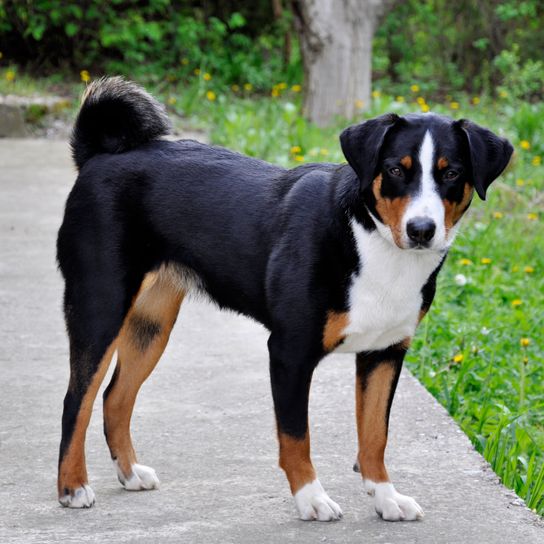
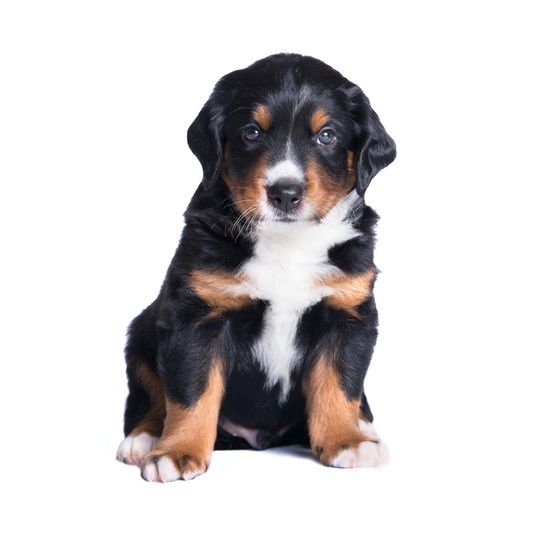
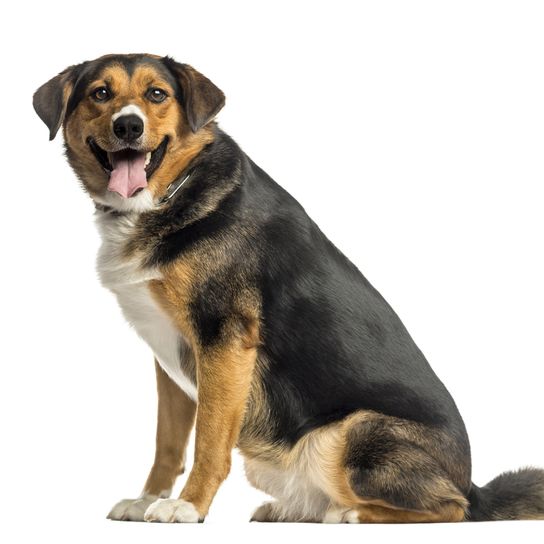
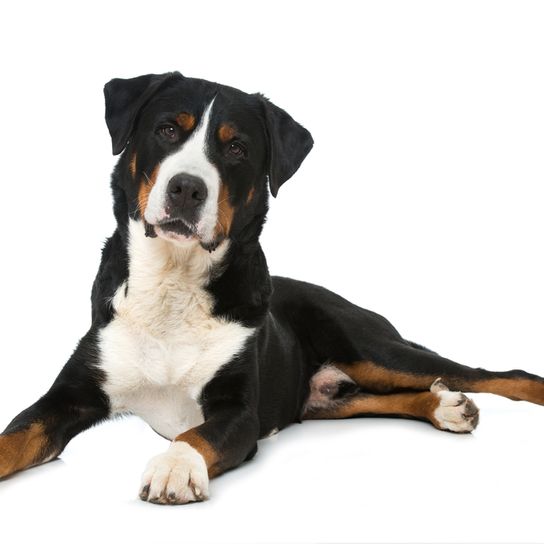
| Alternate Name | Appezöller Bläss |
| Origin | Switzerland |
| Life expectancy | 8 - 12 years |
| Care requirements | low-maintenance |
| Activity level | high |
| FCI group | Swiss Mountain- and Cattledogs |
| AKC group | Foundation Stock Service |
| KC group | working group |
Attitude, character and temperament of the breed
What are the typical character traits of the Appenzell mountain dogs?
If you are thinking of buying an Appenzell Mountain Dog, you should consider that it is a breed that likes to move around. After all, they are used to be responsible for herds of up to 200 animals, which also explains their sense of independence.
As a versatile animal you can even
- train it as a rescue dog. They also perform
- valuable services as guide dogs: Their sensitive nature helps them with this. Sometimes it seems as if your darling can literally sniff out your mood. Once they have settled in with you, they build up an intimate relationship with you. Nevertheless, consistent training is necessary.
- Watch out for wild play with children: Sometimes they can pinch out of sheer exuberance.
- The excellent watchdog is suspicious of strangers. You should also know that the Appenzell Mountain Dog likes to bark. Especially when they feel underchallenged, this can become a problem.
Character
Usage


Health and breeding information
What are typical diseases of Appenzell Mountain and Cattle Dogs?
The fact that tricolourism was defined as mandatory in the breed standard did not benefit the general state of health of the Appenzell Mountain Dog. After all, this reduced the gene pool, which can lead to hereditary diseases in all breeds. The Appenzell Mountain Dog is especially prone to develop the following diseases:
- hip joint dysplasia
- elbow dysplasia
- cataract
- with increasing age: skin tumours
What should be considered in regards to breeding of the Appenzell Mountain Dog?
The Appenzell Mountain dog is a rare breed, so you will probably have to wait for a puppy to become available for some time. However, it pays off, because only serious breeders will provide you with a healthy animal that you will be able to enjoy for a long time. The Appenzell Mountain Dog breeders approved by the 'Verein für Schweizer Sennenhunde' in Austria commit themselves to adhere to the strict breeding regulations and are regularly controlled. Your future four-legged family addition will be vaccinated, dewormed and chipped before you can take them home with you.


What are the breed characteristics of Appenzeller Mountain Dogs?
The Appenzell Mountain Dog is well-proportioned, with a square build. They make their highly set, triangular ears stand up when they are excited. Otherwise they hang down flat. Your darling looks at you from slightly slanted, almond-shaped eyes. The clear forechest is also a striking feature. The bushy tail, which is carried curled up over their back, is called "Posthorn".
Appearance and coat of the Appenzell Mountain Dog
The coat of the Appenzell Mountain Dog has black as its base colour, brown-red and white markings are evenly spread over the animals body. A white blaze runs from the head to the muzzle and chin down to the belly. White spots can also be found on the paws and on the tip of the tail. Beneath their dense and firm coat, the Appenzell Mountain Dog has a dense undercoat. It once protected them from sometimes cold nights in the Swiss Alps. In rare cases the Appenzell Mountain and Cattle Dog can be brown, with the base colour not being black but havana brown.
What is the average size of an Appenzell Mountain Dog?
- males: 52 to 58 centimetres
- bitches: 50 to 54 centimetres
How much does an Appenzell Mountain Dog weigh?
An Appenzell Mountain Dog weighs between 25 and 32 kilograms.
What is the life expectancy of the Appenzell Mountain Dog?
The British Kennel Club states the average life expectancy of the Appenzell Mountain Dog as being only eight years. However, if you decide on buying an Appenzell Mountain Dog puppy from reputable breeding, your darling can also live a good four years longer.
| Fur length | short |
| Fur | flat coated |
| Ear shape | Triangle |
| Tail | rolled up |
| Anatomy | sporty |
| Size ♀ | 50 - 54 cm |
| Weight ♀ | 22 - 32 kg |
| Size ♂ | 52 - 54 cm |
| Weight ♂ | 22 - 32 kg |
| Suitable For | Blind people |
Colors




Known Diseases
Eye diseases
Often occur with allergies and intolerances.
Elbow dysplasia (ED)
Elbow joint dysplasia is a chronic disease complex of the elbow joint of fast growing dog breeds.
Hip dysplasia (HD)
The hip dysplasia or hip joint dysplasia of the dog (HD) is a maldevelopment of the hip joint.
Other large dogs
Useful Articles
You can find articles that might interest you in the dogbible blog to match your favorite breed.
Visit our magazineto stay up to date on dog trends.
To find out more, view our Privacy Policy
Find here the breed that suits you and find out what character traits it has. Here you can also learn more about the origin, size and weight of your favorite breeds.
Matching your favorite breed, you'll find articles that might interest you on the dogbible dog blog.
Hiking with dog in Saxon Switzerland
5 tips for hiking with your dog in Tyrol
Capturing special moments with your four-legged friend - ideas and implementation

